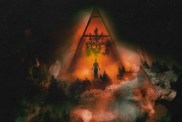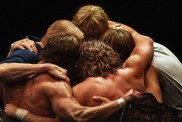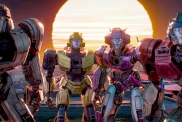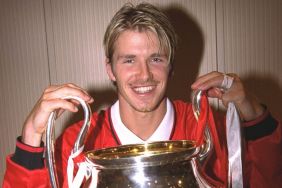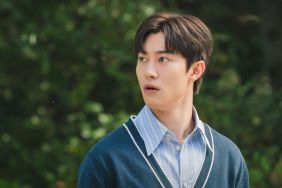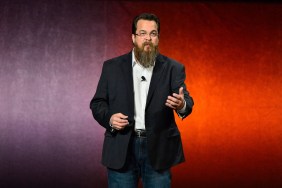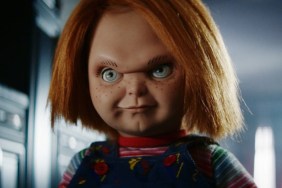This past week’s Camerimage Festival of the Art of Cinematography in Bydgoszcz, Poland honored Director of Photography Roberto Schaefer with a special Cinematographer / Director Duo Award celebrating his collaborations with Marc Forster. Their projects together include Loungers (1995), Everything Put Together (2000), Monster’s Ball (2001), Finding Neverland (2004), Stay (2005), Stranger Than Fiction (2006), The Kite Runner (2007), Quantum of Solace (2008) and, most recently, Machine Gun Preacher (2011).
ComingSoon.net sat down with Schaefer as part of our ongoing series of interviews from the festival. In the below conversation, he discusses his history with Forster, his work with other directors and explains why he wasn’t able to re-team with his longtime collaborator for Forster’s most recent, World War Z.
If you missed them, be sure to check out our previous Camerimage interviews here and look for more in the days to come.
CS: Congratulations on your award. Can you take me back to where your partnership with Marc Forster began?
Roberto Schaefer: I can! Marc and I met when I was shooting a video game for Propaganda and Sony Pictures. “Johnny Mnemonic.” The movie never really went anywhere and the video game never went anywhere. Marc was a friend of the director and he had a script that the director wanted to do. I got introduced to him. He came to the set. I got introduced to both him and the production designer, which was the production designer from “Delicatessen.” He showed me the script and I really liked it and said I’d love to do it. Of course, there was no money and it never happened, but about six months later, I think he called me out of the blue with another script. He asked if I would do it and said there was no money to do it. He said it was a tiny, tiny thing. So I said, “Sure, I’ll give it a try.” It was in LA for ten days straight in one house. We were shooting on Super 16 and I said, “Sure.” I liked Marc and I said, “Let’s try it.” We hit it off. We had a really great working relationship. Since then, everything that came up kept us working together.
CS: It seems like your collaborations cover a diverse range. Is that a very conscious effort on both your parts?
Schaefer: No, it’s usually Marc driving it. He’s finding projects and stuff and he will just call me and say, “I’ve got this project and this is what it is.” I trust his taste and I trust his thoughts. I know he likes to mix things up and change things. Pretty much every film fits into a whole different range. There’s always kind of a thread, though, from the beginning of personal loss and and death and all that.

CS: Do you look forward to the chance to make each film so visually distinctive?
Schaefer: Well, he’ll get influenced. He’ll show me ideas he has from still photographs and things and say the type of thing he wants it to be. I’ll read the script and right away find influences. I’ll see images and hear music and all that. I’ll say, “If we go this way, let’s talk to the production designer and make this more formal or more stylized or more fantastic. “Stay” was one where we really had the chance to stretch with transitions and the whole, “What is reality?” That was one that was even a little bit more fantastical in where we went with it.
CS: You weren’t involved, though, with Marc Forster’s most recent, “World War Z.”
Schaefer: Yeah, that was the one that I didn’t shoot. It was Paramount’s policy. They wouldn’t allow Marc to work with his normal people. But I got to work with Andrew Niccol in the meantime. I did “The Host.” Then I got to work with Lee Daniels and I did “The Paperboy.” Those were two very different films, but both were great experiences for me and really ways to stretch. “The Host” was a science fiction future with a lot of visual effects and lots of long, extended set extensions. Plus, a wonderful director and a wonderful lead actress in Saoirse Ronan. She’s amazing. And then also William Hurt. It was just great.
CS: And some pretty impressive locations.
Schaefer: Yeah, some great locations. Shiprock out in New Mexico was just incredible. We shot a bunch in Baton Rouge in New Orleans, which I’m used to. Then “The Paperboy” was working with Lee Daniels, which was a pleasure and was a wacko-crazy ’60s throwback film. It was a lot of fun.
CS: That was a change-up for him, too, as far as DPs go.
Schaefer: Yeah, Andrew Dunn had done “Precious.” Actually, it started before that. M. David Mullen had shot “Shadow Boxer.” Then Andrew Dunn shot “Precious” and wasn’t available for “The Paperboy.” There was a scheduling thing and I knew Lee from “Monsters Ball.” He had already hired my wife to do costumes on “Paperboy.” She told him, “By the way, he’s available.” I was going to do another film with Lee, “Selma,” which never got done. Then, when that didn’t happen, I wound up being available for “The Paperboy” when Andrew wasn’t. Then I wasn’t around for “The Butler” and Andrew came back.
CS: Can you tell me a little about your thoughts on Camerimage and what the festival represents for you?
Schaefer: This is the only festival that I’ve ever been to that is centered on cinematography. I know there is one other one that I’ve never been to that people talk about. The Manaki Brothers in Macedonia. Somewhere. The Yugoslavian coast, I think. Most festivals are really about the actors, the directors and the producers. The fact that this is more about the cinematography and the image, what could better for us and our egos and for our art? We get to show off what we do and talk about what we do. I’ve also been meeting a ton of other DPs. Cinematographers that I wouldn’t otherwise get to meet. We get to pal around and have dinners. There’s also a lot of young cinematographers and cinematography students who come and want to learn and hear things from us. Whether what we say is valuable, I can’t attest to, but people seem to think so (Laughs).

CS: I’ve talked with a quite a few cinematographers at this festival and there seems to be a very even divide between people who are very classical in their work and people who prefer digital filmmaking and newer technologies like 3D. Where do you fall on that spectrum?
Schaefer: I don’t think that digital versus film necessarily means classical or traditional or avant-garde or whatever. I’ll shoot both. They both exist. I like film. A lot. I like the texture and the feel of film. There are certain films that I think work better on digital. There are many — I think most — that I think work better on film. I think you can make film look as good as or better than digital. If it’s something very clinical and scientific looking, digital makes a whole lot of sense. 3D I can appreciate at times. I’m not a big fan of it. I think it really works for amusement park rides and “event” type of things. And then it works great for animation. My favorite 3D films so far have been animation and then the mixed, heavy-CG, which is some of these films that are more CG than real that, to me, feel like animation. On those, the 3D can work really well. But then just today I saw a live-action one, “Storm Surfers,” in 3D and the 3D really worked there. It got you into the waves with them. It was like an event thing. Like a ride. It was also an interesting film. It was really, really good. Earlier I saw “The Great Gatsby” and, while I loved the film, the 3D didn’t do anything for me. Baz Luhrmann is so lush and so rich and so textural on his own that you don’t need the 3D. It doesn’t hurt it, but I certainly didn’t make it anything I would go out of my way to see because of that.
CS: Do you know what’s coming up next for you?
Schaefer: I don’t know! I’ve got either an outer space Earth disaster film with a 3D conversion or a rock-n-roll biopic that I have no idea what it would be yet. Or, I ‘ll just be doing commercials for another year if there’s no good features around for me to do.
